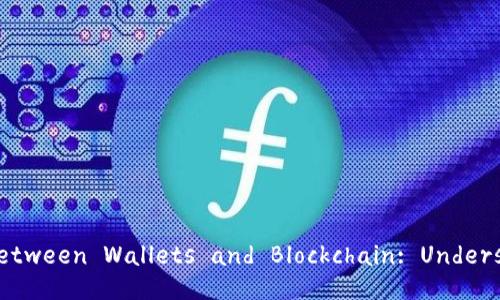Title: The Strong Connection Between Wallets and Blockchain:
- By TP交易所app下载
- 2025-04-22 21:19:35
Definition and Purpose
Blockchain technology is a decentralized ledger system that records transactions across numerous computers. This prevents the alteration of any single record retroactively without changing all subsequent blocks and requiring consensus from the network. By providing transparency, security, and accountability, blockchains streamline processes across various sectors, including finance, supply chain management, and governance.
###How Does Blockchain Work?

The functionality of a blockchain revolves around several key components. Each transaction is grouped into a “block,” which, when filled, will be added to a “chain” of previously validated blocks. Validators or miners then use cryptographic algorithms to ensure each block is secure and verify the authenticity of transactions. Once added to the chain, the data in a block cannot be easily altered, making the system highly secure against fraud.
###Types of Blockchains
Blockchains can be public, private, or consortium-based. Public blockchains are open for anyone to join and validate transactions, whereas private blockchains are restricted to a specific set of participants who maintain a central authority. Consortium blockchains combine the features of both, enabling a group of organizations to manage the network without a centralized authority. Understanding these types sheds light on how wallets are used in different applications.
## What is a Wallet? ###Definition and Purpose

A wallet in the context of cryptocurrency is a digital tool that allows users to store, send, and receive digital assets securely. Unlike traditional wallets that hold physical currency, crypto wallets contain private keys, public keys, and metadata, serving as a gateway to your blockchain account.
###Types of Wallets
There are various types of digital wallets available for cryptocurrency users, each with distinct features and security protocols. The primary categories include:
- **Hot Wallets:** These wallets are connected to the internet, making them convenient for frequent transactions. Examples include web wallets and mobile wallets. However, their connection to the internet makes them more susceptible to cyberattacks. - **Cold Wallets:** These are offline wallets designed for enhanced security. Hardware wallets and paper wallets fall into this category, safeguarding crypto assets without internet connectivity. ###Key Components of a Wallet
At the core of any wallet are two crucial elements:
- **Private Key:** This is a secret code that allows the user to access their cryptocurrency. It is critical never to share your private key, as anyone with access can control your funds. - **Public Key:** This is derived from the private key and serves as your wallet address. Sharing your public key is safe, as it enables others to send you cryptocurrencies without compromising your funds. ## The Relationship Between Wallets and Blockchain ###Integration of Wallets and Blockchain
Wallets are integral to the functionality of blockchain technology. They act as the user interface through which individuals interact with the blockchain ecosystem. Here’s how they interconnect:
1. **Transaction Facilitation:** Wallets allow users to initiate transactions that are then validated by the blockchain. Once a transaction is made, it gets recorded on the blockchain, ensuring transparency and security. 2. **Asset Management:** Users can view and manage their digital assets through wallets, which reflect the current balance and transaction history based on blockchain data. 3. **Security:** The security protocols of wallets are amplified by the immutable nature of blockchains. While a wallet holds private keys, the blockchain ensures that transactions are permanently recorded once validated. ###Wallets as Blockchain Gateways
For users new to cryptocurrencies, wallets can be seen as gateways to understanding blockchain technology. They simplify the complexities of blockchains, enabling users to engage without needing comprehensive knowledge of how the underlying technology operates. Wallets typically come with interfaces that make sending and receiving cryptocurrencies straightforward, translating blockchain activity into user-friendly interactions.
## Frequently Asked Questions ###1. What Are the Security Risks Associated with Wallets and Blockchains?
Understanding security risks when using wallets and blockchains is crucial for protecting your digital assets. Wallets, especially hot wallets, are susceptible to phishing attacks, malware, and hacking attempts. Users must employ good practices such as enabling two-factor authentication (2FA), using strong and unique passwords, and changing passwords regularly. Cold wallets, while far more secure, can also pose risks if they are lost or damaged, as retrieving funds can become extremely challenging without backup measures in place.
Moreover, the decentralized nature of blockchain also presents certain vulnerabilities. As blockchains operate primarily on consensus mechanisms, a majority attack could theoretically manipulate transaction validations. However, the significant computing power required to execute such an attack on established networks, like Bitcoin, makes it highly impractical and unlikely.
###2. How Can Users Choose the Right Wallet for Their Needs?
Selecting the appropriate wallet involves assessing the user's unique needs and preferences. Users should consider factors such as frequency of transactions, security level required, and type of assets held. For users who trade frequently, hot wallets (like mobile wallets) offer convenience and quick access to funds. However, if safety is a primary concern, cold wallets provide more robust security layers. Reviews, community feedback, and the wallet’s reputation within the cryptocurrency community can also guide users toward a safe and suitable choice.
Additionally, users should evaluate the wallet’s features, such as ease of use, backup options, transaction limits, and compatibility with various cryptocurrencies. It's also worth noting that some wallets support multiple assets while others are tailored to specific cryptocurrencies, influencing the decision process.
###3. How Do Wallets Ensure the Privacy of Transactions on Blockchains?
While blockchain technology enables transparent transactions visible to all network participants, wallets offer tools to enhance user privacy. Most wallets use pseudonymous addresses, which means that the public keys do not directly link to a user’s identity. Furthermore, some wallets include features like coin mixers, which obfuscate transaction trails by mixing coins from multiple users, making it challenging to trace the flow of funds.
However, privacy isn’t absolute. Blockchain analysis tools can still analyze transaction patterns and infer user identities based on the data available. Thus, users who prioritize privacy should consider wallets specifically designed to mask their identities and employ additional privacy-focused cryptocurrencies.
###4. Can Wallets Impact the Performance of Blockchain Networks?
The performance of blockchain networks can indeed be influenced by how wallets interact with them, particularly in terms of transaction loads. High user activity through wallets can lead to network congestion, showing the balance between usability and performance. When there are many transactions initiated by wallets, it can lead to slower processing times and higher transaction fees due to increased competition among users for transaction validation.
Network scalability becomes an essential topic here. Some blockchain ecosystems are tailored to handle higher transaction volumes, supporting faster and cheaper transactions even as more users engage with wallets. Wallet designs that optimize user interactions while minimizing blockchain loads are contributing to enhancing overall network performance.
###5. What Future Trends Can We Expect in Wallets and Blockchain Integration?
As the financial ecosystem continues to innovate, significant trends are emerging in wallet and blockchain integration. Decentralized finance (DeFi) is reshaping the landscape, moving away from traditional financial intermediaries and enabling users to interact directly through decentralized protocols. Wallets that can seamlessly connect with DeFi applications will likely gain traction and relevance as users look for ways to maximize returns on their digital assets.
Furthermore, as regulatory frameworks position themselves around cryptocurrencies, wallets may incorporate features that comply with local regulations, enhancing legitimacy and user confidence. Notably, wallet solutions incorporating multi-signature functionality and enhanced authorization processes may prevail as security remains a top concern.
Blockchain interoperability is another trend creating new opportunities for wallet functionalities, enabling users to facilitate transactions across different blockchain networks. As users demand more connectivity and streamlined experiences, wallets must evolve to meet these emerging challenges and opportunities.
## Conclusion In conclusion, the interdependence of wallets and blockchain technology is integral to the user experience in the cryptocurrency space. Wallets act as the vital interface that not only facilitates transactions but also enhances security and asset management within blockchain networks. As innovations continue to shape these technologies, understanding their relationship will empower users to navigate the digital asset space with confidence. Whether for investment, utility, or ethical considerations, the future of wallets and blockchain promises exciting advancements that deepen their connection and enhance the overall ecosystem.


